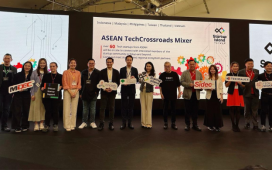*See end of article for more information on methods, data analysis, and results
Over the years, there have been conflicting reports regarding workforce-related shortages in the science, technology, engineering, and math (STEM) fields. While some have cited that there is a shortage, others refute those claims, pointing instead to a surplus of STEM professionals.1,2 Indeed, a growing body of literature points to shortages in certain areas and a surplus of talent in others, suggesting the need for contextualizing the shortage or surplus, which may help explain the conflicting trends.3 For example, the most recent report by the Bureau of Labor Statistics reported a shortage in some occupations, such as nuclear and electrical engineering PhDs who are US citizens while pointing to a surplus among Biology PhDs aiming for academic professorships.4
Given the wide breadth of disciplines and industries STEM covers, efforts have been made to understand exactly how and when shortages or surplus in talent may manifest and how they differ within certain industries. Naturally, we wonder how might these trends emerge in the drug development industry? The area of drug development provides an opportunity for a nuanced understanding of talent trends given the industry’s cross-disciplinary nature, spanning the biological sciences, engineering, statistics, and data science, to name a few. Gaining accurate insight into talent trends can better equip organizations to adapt and plan their employee recruiting and retention strategy to ensure they are attracting, developing, and retaining the appropriate talent. Yet, to date, very few studies have examined the workforce development needs in the pharmaceutical industry. In fact, only a handful of studies have explored talent trends in the pharmaceutical workforce, with very few focused on labor patterns in the US.5–7
For instance, turnover rates remain high among FDA-regulated principal investigators, while the number of registered trials has grown.7 This trend coupled with the increased complexity of protocol design point to growing demands for experienced professionals who can manage and navigate the growing complexity and intricacies of clinical research.8
To enhance the body of research on workforce trends in STEM, Tufts Center for the Study of Drug Development (CSDD) set out to investigate the state of the talent pipeline within drug development from leadership’s perspective. Thus, the purpose of this study was to explore perceptions among senior leaders to gauge their experience related to workforce trends in drug development. Following are our results, broken into four sub-categories.
Types of workforce shortage
The data revealed four main types of shortages, which were 1) diversity-related shortages; 2) shortages related to experienced hires; 3) role shortages; and 4) skill shortages. Diversity-related shortages dealt with the inability to find and hire diverse talent. Several shared that though they are seeing improvement in gender representation, the talent gap related to racial minorities was still present, particularly among Black professionals. When asked about possible drivers of this gap, several participants attributed the gap to a pipeline issue stemming from there not being enough college graduates from diverse backgrounds who pursue STEM careers. Interestingly, one executive working at a large, global pharmaceutical company shared that in their area, they noticed less representation for Native American and Hispanic/Latinx talent than Asian or Black professionals. Further, while a few executives shared that Asian employees were well represented in their organization, it was shared that a large portion of their Asian talent were international, not Asian American. One executive attributed Asian representation to the organization being an Asian company based in Asia, and hence having a large Asian representation.
The second type of shortage related to finding experienced hires at the management level and above. This was especially pronounced because a lot of professionals from the baby boomer generation, those in their sixties and older, are retiring. One executive mentioned that their organization had a difficult time filling the gaps left by those who were newly retired, resulting in inflated titles due to rapidly promoting inexperienced people who may not have all of the qualifications to step into the senior leadership role. Relatedly, another participant mentioned that this particular phenomenon is making it difficult for smaller firms to compete for talent given that smaller firms cannot match larger organizations that can provide the titles and the associated compensation and incentive.
Shortages related to specific roles also emerged from the data. Example of roles that were in short supply included: clinical pharmacologists, data scientists, and statisticians, as well as project managers, frontline clinical research associates (CRA), the latter of which were in short supply in clinical operations. Additionally, there seemed to be a higher turnover among contract research organizations than sponsor organizations.
Lastly, participants noted that certain skillsets were in short supply and high demand. The most frequently mentioned in-demand skillsets that were increasingly difficult to find were analytical and technical skills—namely data engineering, data science, statistics, and math. Several participants shared that the ability to analyze large quantities of data and communicate the relevant findings to stakeholders has become paramount and that this particular skillset is lacking in a lot of roles within drug development. Furthermore, a few noted that even roles that traditionally did not require strong expertise in data analytics, such as CRA roles, are now requiring candidates to possess at least some level of data analysis, and that finding candidates who possess both CRA and data skills has become a challenge. We also found that there is a growing demand for people possessing a blend of data science and drug development expertise who can easily navigate the complexities of the drug development process.
It was noted that big data is changing every aspect of the drug development process, from discovery to commercialization. For example, late-stage products—those in Phase III onward—are being developed using a traditional approach to informatics. In contrast, early-stage products—those currently in preclinical through Phase II—are being developed with the assistance of artificial intelligence (AI) and machine learning (ML). This fast-paced transition will require a large number of personnel with advanced engineering, data science, analytics, project management, and leadership skills. While the number of new roles that require these skills has expanded, the pool of individuals with these skills has lagged.
Drivers of shortages
In this section, we examine overall drivers of this disparity, as well as factors that worsened certain types of manpower shortages. Drivers were classified into (1) external factors—aspects that are exogenous and beyond the scope or control of any given organization, and (2) internal factors—aspects that are endogenous and, to some extent, within the scope or control of an organization.
External factors
External factors include socio-contextual events, such as the COVID-19 pandemic—and the “new economic paradigm” that emerged because of it (including increased consolidation of the pharmaceutical sector through mergers and acquisitions (M&A), and increased public and private funding for all stages of the biopharma development process); lack of awareness among students and young professionals about career opportunities in drug development; pipeline problems (which many referred to as a “talent drain”); the retirement of the baby boomer generation; and drastic cultural changes within the drug development industry.
The COVID-19 pandemic (and the economic environment that followed)
Participants shared that during the pandemic, sponsors and their vendors (e.g., CROs, etc.) lost a high volume of staff due to burnout and illness. Employees faced increased work responsibilities, while being simultaneously burdened by additional at-home obligations such as home-schooling and caretaking, a finding that mirrors challenges faced in other industries as well.10 Sponsors were better able to recruit compared to vendors, but the impact of labor shortfalls experienced by vendors was passed onto sponsors. Further exacerbating the labor shortage is the highly collaborative nature of biopharmaceutical development that requires global teams working across geographical regions and time zones, necessitating people working to cover meetings with partners in Europe and Asia. In the face of a staff shortage, coupled with growing demands from government, investors, and the public for rapid drug development strained the already long work hours the biopharmaceutical staff has been accustomed to. As one study participant noted, “This all leads to long work hours, so people leave.”
The data also showed that biopharma turnover rates—historically perceived as high compared to those of other industries—were exacerbated by the pandemic. By normalizing remote work, the pandemic led to the reduction of geographic barriers to recruitment, thereby increasing job mobility for individuals with STEM backgrounds (especially in data science and statistics), project management experience, and leadership skills. Skilled workers were able to leave their jobs for better pay at competing biopharmaceutical companies, as well as in other industries. However, in cases where remote work was not possible and geographic barriers to recruitment persisted (i.e., biopharmaceutical manufacturing and on-site clinical operations), turnover remained high and was perceived to be caused by low salaries and/or low levels of flexibility.
The pandemic also had important implications for recruitment of STEM PhD students into the biopharma industry. Many had to pause their research and dissertations as universities and laboratories shut down. The closing of elementary schools and high schools also had implications for PhD students with children; this led to an increase in homeschooling and other caretaking responsibilities that delayed completion of PhD studies, reducing the pool of candidates available to the biopharmaceutical industry.
The talent drain
The “talent drain” was frequently cited as a top contributor to the workforce shortage. Most notably, participants shared that college students often lack awareness of the biopharmaceutical industry, its mission, and its workings, citing this gap as a missed opportunity to encourage young talent to pursue careers in drug development. Second, participants conjectured that that there may be barriers for many students to pursue advanced STEM degrees, creating a gap in the pipeline early on. As an example, participants noted that graduate students in the United States are often underpaid (if paid at all) during their university years. Graduate student salaries are often barely sufficient to cover living expenses, especially in high cost of living cities such as Boston, San Francisco, San Diego, and New York, home to universities that offer competitive college degrees in STEM, which hinders students from pursuing advanced degrees in STEM. Third, barriers related to retaining international talent (i.e., lengthy, costly, and uncertain processes to obtain a work visa) were cited repeatedly as an external factor in STEM shortages and a major driver of the “talent drain.” Consequently, companies and their leaders are struggling to hire and retain top international STEM talent who complete their graduate education in the US.
Internal factors
The data also highlighted internal drivers of STEM workforce shortages. These include lack of professional development in companies to develop, train, and retain their talent; outdated Human Resource practices that do not keep up with current needs; and systemic racial and gender bias among hiring managers.
Challenges related to professional development revolved around lack of training opportunities that would equip professionals with skills in leadership, technology/data science, and life science.It was shared that while it is easy to find someone who possesses one or even two of the three areas, it is rare to find individuals who have relevant experience in all three domains. Several participants went onto share that their company does not have the resources dedicated to train individuals, citing that many of the training programs were either ad-hoc or insufficient, if they existed at all.
Traditional approaches to Human Resources practices and requirements were cited as a contributing factor driving the shortage. Though more flexibility is required, such as opportunities to broaden employees’ experiences and leadership capabilities within the company, participants shared that their organization’s professional development strategy often did not have the flexibility or the capability to help develop and retain employees. This is ever more important for technical experts who want to develop leadership capabilities and manage teams. However, it was also shared that not all technical experts want to become managers—and may not be suited for managerial positions. Thus, a flexible approach to talent development that takes into consideration the needs and skillsets of employees rather than a one-size-fit-all approach was advised.
Impact of shortages
The STEM shortage has had an impact on many aspects of the drug development process, which fell into two main categories: impact on employees and impact on the organization. Participants shared that their employees cited both the frequency and severity of burnout and the associated frustration and negative impact of burnout on their quality of life. This is particularly true for employees who have skills and talents that are in high demand because they are constantly pulled into different projects and as a result become overworked. In contrast, participants shared that employees who lack the skills that are in high demand often felt left behind and frustrated by the ever-increasing pace of change that requires constant and mandatory adaptation, noting that adequate guidance and tools are often lacking, exacerbating their frustration.
Organizational areas that were impacted ranged from stifled innovation to budgetary strains. First, the shortage has led to stalled innovation due to extended timelines to accommodate staffing shortages as projects scramble to find people who have the necessary skills to compete projects in a timely manner. This has been linked to a reduction in the speed of development for targeted therapies, as well as the obstruction of opportunities to develop medicines faster. Second, the shortage has increased the training costs for new hires. New hires are rarely ready-to-go, often needing extensive training and guidance to be brought up to speed. This takes time away from product development and project execution. Similarly, high levels of investment are required to retrain existing staff and develop their leadership skills to prepare them for leadership roles. Third, the shortage has put a strain on company budgets, specifically driving up the need for funds to hire external consultants to meet the staffing shortage, contributing to the increase in development costs.
Strategies to combat workforce shortages
In the face of such challenges, participants shared a few strategies they are using to address the gaps. Here we will present the top strategies related to attracting, developing, and retaining the talent pipeline. Participants revealed that they have been trying to increase candidates in their selection pool by targeting college and graduate students, as well as young professionals. To do so, their organizations are investing in creating internships to provide paths for potential candidates to seek careers in drug development. Another commonly cited strategy was investing in training. The majority of those interviewed emphasized the need to invest in training, which included on-the-job, hands-on training to equip professionals with the necessary skills required for their role; upskill training that focused on training individuals to be equipped with necessary skills for the next level; and training to give professionals exposure to different functional areas to encourage lateral moves across functions within the industry. Lastly, the need for leadership development programs to train scientists to become better managers and leaders was also shared among the participants, underscoring opportunities to drive retention among professionals.
Discussion
Our study helped shed light on specific talent trends in the drug development industry. By interviewing executives from a range of areas within drug development, we were able to uncover common themes regarding their perceptions of shortages related to diversity, skills, and roles. The shortages related to racial diversity mirror trends from other areas in STEM, showing a persistent gap in racial minority representation. While many of the executives we interviewed were aware of the benefits of hiring and retaining a racially diverse workforce, most attributed the racial gap to a pipeline problem. More specifically, the most cited driver of this racial disparity was lack of available candidates in the hiring pool, commonly referred to as the “not enough qualified Black talent” factor, which has been critiqued and countered.11,12 While it is true that compared to Asians and Whites, fewer Black and Latino candidates graduate from STEM programs, not dedicating the time, resource, and energy to actively target and recruit racially diverse candidates who are graduating from STEM programs, and not looking beyond one’s network is likely exacerbating the representation gap.13 Thus, the challenge is not that these diverse candidates simply don’t exist, but that they are not present in existing candidate pools and that their smaller numbers will make it more difficult to find them, highlighting the need for investing more time to expand the talent pool to search for them.
Our findings also underscore specific skillsets and roles that are in high demand. As organizations become more sophisticated with the types and amount of data they collect to drive the drug development process, so do the skillsets required to manage the growing needs around managing, analyzing, and making sense of the data. Importantly, we highlight how the shortage has affected and will continue to impact the rising cost of drug development, necessitating more investment to fill the pipeline, develop and train employees, accommodate flexible work arrangements, and raise awareness among college graduates and young professionals about career opportunities in drug development.
Methods
Recruitment was done primarily through word-of-mouth referrals. Potential participants were contacted through email and invited to participate in a one-hour virtual interview to share their perceptions and experience dealing with their STEM talent. The study received IRB approval from the authors’ institution.
A total of 10 semi-structured interviews were conducted over Zoom by the two authors. 6 out of 10 were women. The average age was 47.9 years, and the average work experience was 24.6 years. Most had a graduate degree. For more details regarding the study participants, see Table 1.
We used a semi-structured interview guide consisting of general, open-ended questions as well as follow-up questions meant to probe for more details. Sample of general questions include: “What has your experience been with workforce shortages in your functional area?” and “What might be driving those shortages?” Example of follow-up questions include “What has been the impact?” and “How has your organization been dealing with the shortages?”
Data analysis
Interviews were transcribed verbatim using the transcription feature on Zoom and then manually checked by the authors to ensure accuracy. We used a thematic approach for coding and analysis, which allows for themes to emerge from the data.9 This process involved open coding that allowed us to capture a range of different incidents, which were subsequently consolidated under themes. The two authors independently coded the transcripts. During this process, we met regularly to discuss emerging themes and reconcile any discrepancies in the coding process, while consulting the literature on workforce shortages in STEM to guide our coding.
Results
Next, we will present the findings of the study related to 1) the types of workforce shortage; 2) drivers of the shortages; 3) impact of the shortages; and 4) strategies being used to address the shortages. Of the 10 executives we interviewed, all confirmed that they experienced some form of workforce shortage within their organization, function, or team.
Jennifer Kim, PhD, Research Assistant Professor, and Maria Florez, MA, Senior Analyst and Research Consultant; both with the Tufts Center for the Study of Drug Development
References
- Policy OAI. Industrial Capabilities: Report to Congress.; 2020.
- Hira R. Is there really a STEM workforce shortage? Published 2022. Accessed December 21, 2022. https://issues.org/stem-workforce-shortage-data-hira/
- Catalyst. Women in Science, Technology, Engineering, and Mathematics (STEM): Quick take. Published 2019. Accessed March 14, 2020. https://www.catalyst.org/research/women-in-science-technology-engineering-and-mathematics-stem/
- Yi X, Richard C. L. STEM crisis or STEM surplus? Yes and yes. Monthly labor review. Published 2015. Accessed December 21, 2022. https://www.bls.gov/opub/mlr/2015/article/stem-crisis-or-stem-surplus-yes-and-yes.htm
- Bates I, Patel D, Chan AHY, et al. A comparative analysis of pharmaceutical workforce development needs across the commonwealth. Research in Social and Administrative Pharmacy. 2023;19(1):167-179. doi:10.1016/j.sapharm.2022.07.010
- Mukhalalati BA, Ibrahim MMME, Al Alawneh MO, Awaisu A, Bates I, Bader L. National assessment of pharmaceutical workforce and education using the International Pharmaceutical Federation’s global development goals: a case study of Qatar. Journal of Pharmaceutical Policy and Practice. 2021;14(1):1-18. doi:10.1186/s40545-021-00305-y
- Getz KA. Tracking change in the global investigative site landscape. Applied Clinical Trials. 2021;30(12).
- Getz KA, Campo RA, Kaitin KI. Variability in protocol design complexity by phase and therapeutic area. Therapeutic Innovation & Regulatory Science. 2011;45(4):413-420. doi:10.1177/009286151104500403
- Glaser BG, Strauss AL. Discovery of Grounded Theory: Strategies for Qualitative Research. Routledge; 2017.
- Kossek EE, Dumas TL, Piszczek MM, Allen TD. Pushing the boundaries: A qualitative study of how stem women adapted to disrupted work–nonwork boundaries during the COVID-19 pandemic. Journal of Applied Psychology. 2021;106(11):1615-1629. doi:10.1037/apl0000982
- McDonald, Autumn. The racism of the “hard-to-find” qualified Black candidate trope. Stanford Social Innovation Review. Published 2021. Accessed January 12, 2023. https://ssir.org/articles/entry/the_racism_of_the_hard_to_find_qualified_black_candidate_trope
- Weise, Elizabeth, Guynn, Jessica. Black and Hispanic computer scientists have degrees from top universities, but don’t get hired in tech. USA Today. Published 2020. Accessed January 12, 2023. https://www.usatoday.com/story/tech/2014/10/12/silicon-valley-diversity-tech-hiring-computer-science-graduates-african-american-hispanic/14684211/
- Roberts, Laura Morgan, Mayo, Anthony J. Toward a racially just workplace. Harvard Business Review. Published November 14, 2019. Accessed February 5, 2023. https://hbr.org/2019/11/toward-a-racially-just-workplace











